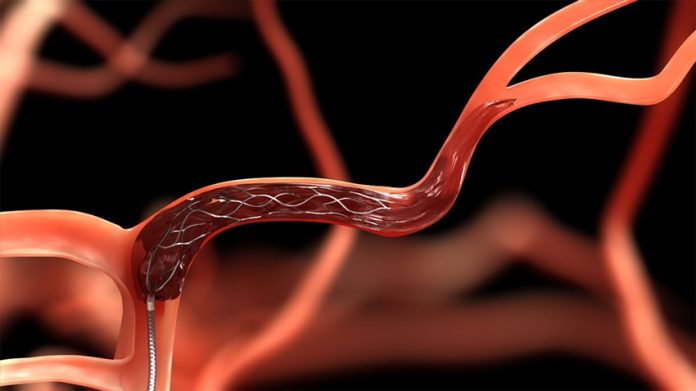A study conducted in the Netherlands found that using a new type of stent to remove large blood clots in the brain greatly enhanced the recovery of stroke patients, allowing many to return to an independent life. The study, published in the edition of The New England Journal of Medicine, is being called a “game changer” and “the real thing” by medical professionals.
“Catching the clot and fishing it out of the blocked artery to reopen it makes a big difference in outcome,” Jeffrey Saver, MD, director of the University of California Los Angeles (UCLA) Stroke Center, told Reuters Health.
Saver, who did not participate in the study, noted that while clot-grabbing devices had been around for a while, up until now there hadn’t been a clinical trial to provide evidence that they made patients better.
The American Stroke Association reports that about 795,000 Americans suffer a stroke each year, making it the fourth leading cause of adult death and disability in the U.S. Caused by clots blocking blood vessels in the brain, stroke is traditionally treated with tPA, an injectable clot-dissolving medication. However, while tPA works well for small clots, it is not as effective when treating large clots.
For their study — known as MR. CLEAN — Dutch researchers conducted a clinical trial involving 500 patients who had large blood clots. All patients were administered a tPA if eligible. Half were randomly assigned to also get intra-arterial treatment — the insertion in the groin of a stent placed on the end of a catheter threaded through an artery to the brain. When the catheter reaches the clot, the stent is opened and inserted in the clot. Once the stent grabs the clot, the doctor removes the catheter, taking with it the stent and attached clot.
Results of the clinical trial showed that within 90 days of treatment, 32.6 percent of the patients who had the intra-arterial procedure were functioning independently, compared to 19.1 percent who only received the clot-dissolving tPA.
Both treatments were reported as being safe, showing no differences in bleeding or mortality. In addition, intra-arterial treatment is effective up to 6 hours after stroke onset, while tPA is only effective for 3 to 4.5 hours after the first symptoms of a stroke.
“We knew already that we can open blocked blood vessels with the [intra-arterial] treatment, but now we have proof that patients have better outcomes, they actually benefit by being less disabled and less handicapped,” lead researcher Diederik Dippel, PhD, a neurologist at Erasmus M.C. University Medical Center in Rotterdam, told HealthDay.
Dippel stressed that while tPA is not necessary for intra-arterial treatment to be effective, stent insertion must be done within 6 hours after the first signs of a stroke appear.
The director of UCLA Stroke Center also emphasized the importance of timing.
“Stroke is now an even more treatable disease today than it was yesterday,” said Saver, referring to the clot-grabbing devices. “But we can only use them if patients get to the hospital in time.”








